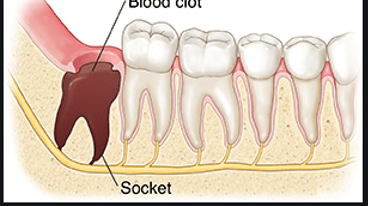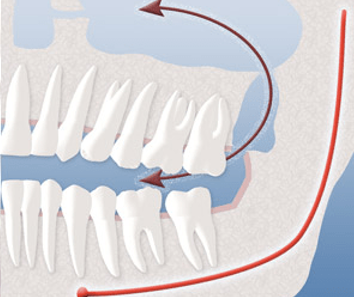EFFECTIVE REMEDIES FOR DRY SOCKET
Have you ever visited a dentist before?
I’m quite sure you’d feel like seeing one right now. And I’m not saying you shouldn’t see one as soon as possible if you wish. But I’ve just got you a perfect answer to when you can stop worrying about dry socket.
Many of us would have one reason or the other to visit the dentist. Either for tooth extraction, gum infection, or the likes. Upon all, these medical actions would be successful. Just as successful as these medical attempts are so are the following answers.
Actually, after you undergo a tooth extraction with your dentist, there’s that discomfort feeling, that could be mild, sometimes, immediately after the anesthesia wears away. As a result of this, such a dentist has to recommend a pain killer for you. With no doubt, dentists are used to recommending Antibiotics, which are popularly known to avoid the exposed bony socket which is new to be infected.
The bony socket is actually that hollow cavity in the alveolar bone ridge that holds the tooth.
Commonly, when proper adherence is given to post-extraction guidelines, that discomfort form extraction would relieve you. As popularly known, healing should commence, instantly. Meanwhile, this could happen when you begin to feel that the discomfort after the extraction is prolonging and turning worse for a delayed long time, by and by.
Check yourself well, you might’ve already known too. Most likely, you may have been affected by a condition we call dry socket. Some of us are already used to this term. You probably are. But what is the joy behind constantly worrying about dry socket? Peace is what we both crave for a day in and day out. But sometimes, I found myself bothering about the unfair occurrence of dry socket. This was actually what drove my passion to search deep and find answers to this worry.
What Actually Is Dry Socket?

Dry socket could also be regarded as “Alveolar Osteitis”, and it’s an inflammation on the alveolar bone socket region that occurs after tooth extraction.
Dry socket is typically the most popular complication accompanying any tooth extraction, particularly the extraction of the 3rd molar tooth. Actually the likelihood of a patient to develop dry socket appears more certain when extractions comprise of impacted lower molar teeth.
But guess what?
We already know how dry socket appears really inconvenient and could b even be extra discomforting. It can actually be healed with ease. So that we can better comprehend this dry socket concept, we can first study the exact occurrence that happens immediately after a tooth undergoes extraction.
What Exactly Happens After An Extraction?

Immediately after a patient’s tooth is extracted, the dentist would carefully place a cotton gauze on top of the extraction segment. He’ll then instruct such patients to bite it firmly. This could be achieved in order to derive hemostasis. Hemostasis is a concept that explains how bleeding stops.
As soon as the socket halts bleeding, a blood clot develops in the socket. This clot demonstrates as a protective plug over the exposed socket, which protects the bone and nerves beneath. Meanwhile, the blood clot is crucial during the healing moment due to the fact that it affects up as the framework on which the new bone would build on to fill up the soft tissue (gum) and the socket would develop over the socket.
However, the gums have to build up and fully developed between three to four weeks after the tooth extraction. Meanwhile, the bone underneath continues to regrow, and the course could use up to 24 weeks to fully complete.
Normally, you would be strange to this result due to the fact that the gums were meant to heal. Since our dream is to keep carrying out your daily activities as usual.
When Can I Stop Worrying About Dry Socket?
Are you prone to getting a dry socket? That could survive anywhere between seven days and ten days. Meanwhile, you could worry less and know you are safe from a dry socket when you are after the first tooth extraction week extraction with no unusual occurrences.
So as to avoid the worry about dry socket in the at first, I do recommend that you take preventive measures, particularly in the first 24 hours after tooth extraction has taken place.
After abiding by the post-extraction rules such as avoiding sucking on a straw, avoiding smoking and poking the area where extraction was being carried out with your tongue sucking on a straw and avoiding poking the extraction area with your tongue, you’d have less reason to worry about the dry socket.
More so, you’d need to be cautious with how you deal with your mouth immediately after having an extraction. Especially during the first couple of days.
Ensure you keep your mouth clean always. Gently handle it. Avoid hard foods. Keep your diet soft and chew your food on the opposite side of the mouth, distant from the extraction segment.
Furthermore, avoid taking hot or acidic beverages that could make the blood clot melt and break down. Refrain from taking alcohol or utilizing alcoholic mouthwashes.
How Does Dry Socket Occur?
Typically, a dry socket always occurs when interference with the protective blood clot happens. Essentially, this state would arise whenever the blood clot refuses to form or when the blood clot has been involuntarily dislodged. As a result, the unavailability of the blood clot would leave the socket exposed and vulnerable.
Do you know the implications? The nerves and bones would be opened to the conditions in the mouth, thereby inflicting severe discomfort. Food debris could potentially intrude the socket too, hereby adding to the pain. Then, dry socket pains usually become noticeable from one to three days after extraction takes place.
Factors that can interfere with blood clot staying in the socket include the following:
The appearance of an existing infection in the mouth before extraction was done. For instance, periodontal or pericoronitis disease pre-existing inside the mouth and even some kinds of oral bacteria could actually guide the blood clot against forming or play a role in breaking down the blood clot.
Certain actions done after having an extraction could mechanically dislodge or force out the blood clot. These actions include dragging action on a cigarette, sucking candy or sucking through a straw, spitting and vigorously rinsing the mouth. As a result of this, your dentist may advise you to refrain from using a straw for the next few coming days after the extraction and to be gentle if you have to spit at all.
For smokers, exposure to nicotine might inflict the blood supply to be reduced. This reduced blood supply may, adversely, guide against the blood clot to develop in the extraction socket place.
Certain physiological factors such as hormones and increased bone density might affect the growth of blood clots. Generally, women are known to be vulnerable to a higher risk of getting a dry socket, probably due to constant changes to their hormonal growths, compared to men. And that could also owe to the use of contraceptives that are or just as a result of expected changes in levels of hormone levels in the system during the normal growth process.
(When Can I Stop Worrying About Dry Socket)
Bones at the jaw turn denser as we grow older, and due to that, there is less blood flow in the bones. A bone that is denser would reflect the higher risk of developing a traumatic extraction, and a higher likelihood of developing a dry socket.
Specific Symptoms of Dry Socket
Dry socket symptoms appear classic and could be examined below:
Intense discomfort from the extraction segment which always begins after a few days after extraction. This discomfort could as well radiate, and spread from the extraction sight to the ears, neck, temple or nose.
Another symptom is an empty socket having a meager or no blood clot. The shown whitish bone could be seen.
Also, another symptom is a bad taste or breath from mouth.
How Is Dry Socket Treated by attending a Dentist?
To treat a dry socket, your dentist has to first carry out a “Dry Socket” diagnosis by highlighting out your symptoms and performing an oral test. As Dry Socket is concerned, you can check out the below:
Bleeding re-establishment. Any dentist who attends to you has to wipe off all debris from the socket and lure it to bleed once more. Expectedly, he’s meant to instruct you to bite on a gauze so that the bleeding would stop. Afterward, he’ll also dress the socket professionally so as to enhance its healing.
You’d then be recommended pain killers that’ll guide against discomforts and vulnerability to resulting infections
Conclusion
Hands down, Dry Sockets could be a devastating condition. It results from a blood clot in the socket not forming well or getting dislodged. And you can prevent it or treat it. When you abide by the post-extraction rules your dentist gives, you’d reduce the potential to worry about a dry socket.

